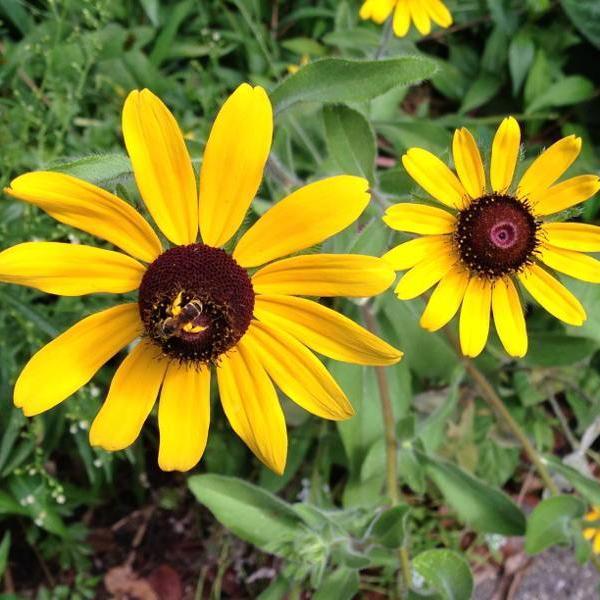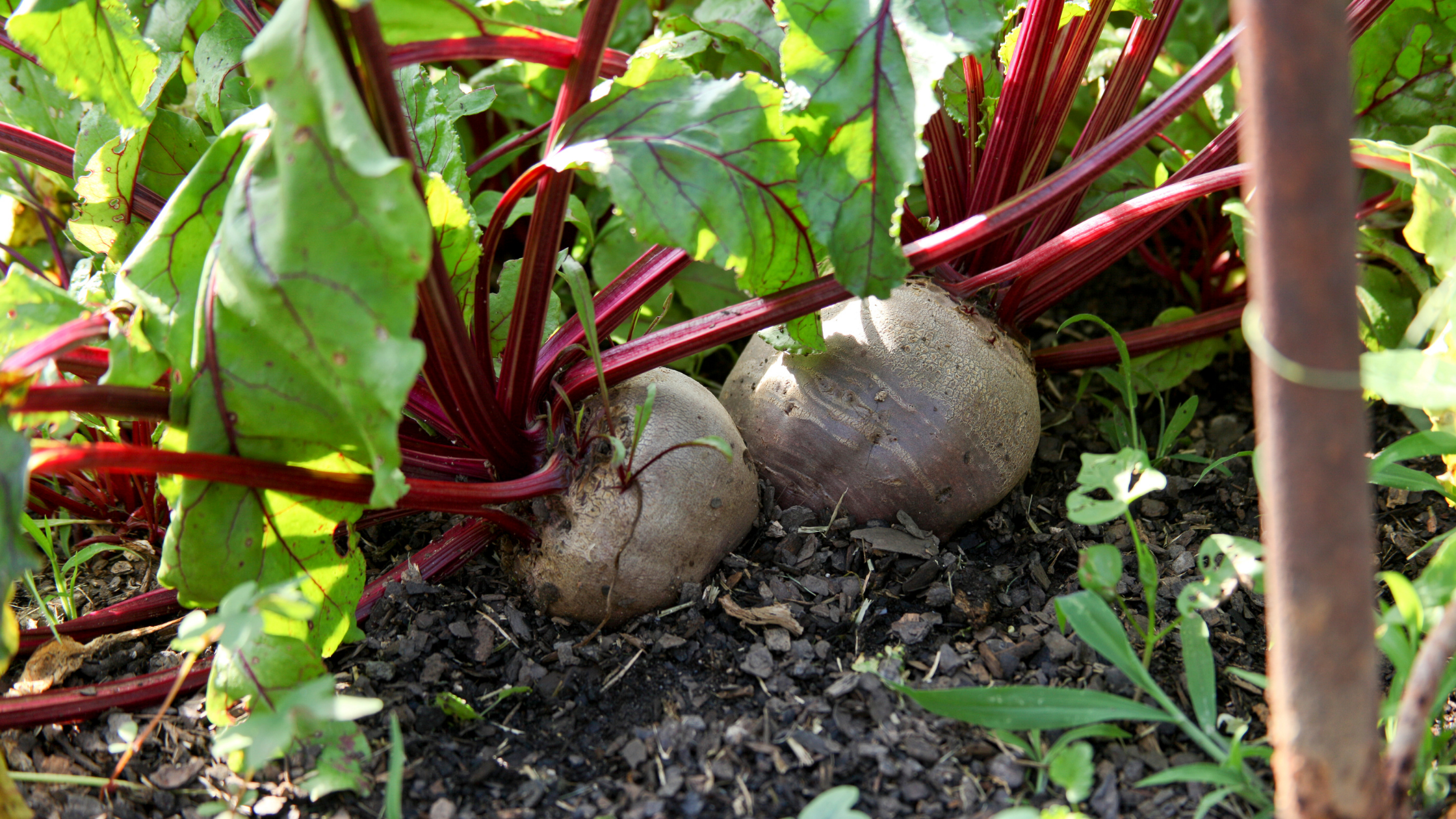Sow True Seed: Our Generative AI Policy
Sow True Seed will never use generative AI in any art, copywriting, blog posts, or advertisements of any kind. Our human-first business will continue to be just that - human...
Fresh new look, same great seeds - read all about our brand refresh on our blog!
Free Shipping on All Orders - All December Long!


Nothing quite says wildflower like the stunning Black-Eyed Susan. Gorgeous, sunny, yellow petals surround a dark brown center, the eye. This is a cottage garden favorite for its easy to grow habit and ability to produce hundreds of blooms throughout the summer and fall. These attractive blooms attract many different types of pollinators and their seed heads are beloved by birds. Black-eyed Susan’s make an excellent cut flower with up to ten days of vase life. Rudbeckia hirta is one of several Rudbeckia species that are native to North America. They are commonly found growing by roadsides, in meadows or open fields, and on the edges of forests. Try incorporating them into your garden as a border planting, along pathways, or in containers! They appreciate drier, well-draining soil as they cannot tolerate wet roots for extended periods. Seeds should be cold stratified for best germination. They are hardy in growing zones three through nine. Perennial.
Minimum Seeds per Packet: 400
Packet Weight: 0.5g
Planting Season: After Last Frost
Sowing Method: Direct Seed or Transplant
Seed Depth: Surface
Direct Seed Spacing: 6-12"
Soil Temperature: 60℉
Days to Sprout: 5-21
Mature Spacing: 12-18"
Sun Requirement: Full Sun to Part Shade
Frost Tolerance: Frost Sensitive
Days to Harvest: 120
Production Cycle: Biennial
When to plant Black-Eyed Susans depends on a few different factors. If you plan to direct seed into your garden and let nature do the work of stratification, they will need to be planted in the fall. We like to wait until after the first frost to sow these seeds to ensure a long enough cold and moist period. If you would like to transplant seedlings come spring, ensure that you stratify your seeds indoors ahead of planting. Start this process ten to 12 weeks before your last frost. Once stratification is complete, plant your seeds six to eight weeks before your last frost. Transplant them out into the garden once all danger of frost has passed.
When growing native plants, the best advice we can give you as to where to plant is to take a look at where that plant grows in the wild. Black-Eyed Susans are often found growing on roadsides, the edge of forests, and in meadows in full sun. To have the greatest chance of success, think about where in your garden these environments may be mimicked.
Black-Eyed Susans will appreciate full sun (at least six hours a day), but can tolerate partial shade. They do not like to have wet feet so will prefer to be somewhere with well-draining soil, however they can tolerate a wide range of soils so there’s no need to worry so much about what kind of soil they’re planted in.
Whether direct seeding or seeding indoors, Black-Eyed Susan seeds should be sown on the surface of the soil and pressed down lightly to secure seed to soil contact. Do not cover the seeds. Like any seed, they will appreciate a good amount of water to ensure adequate germination. When transplanting, plant them at the appropriate mature planting distance of 12 to 18 inches. If direct seeding, seedlings can be thinned to this distance once they have first first true leaves.
Black-Eyed Susans require very little attention once they’re established. As they’re becoming established, we recommend watering them consistently so they’re getting an inch of water a week. Once established, they are quite heat and drought tolerant. The only ongoing care they really need is to be deadheaded. This is optional but will extend their flowering period. Towards the end of the growing season, allow the flower heads to mature and form seeds for the birds, saving yourself, or reseeding in your garden.
Rudbeckia can be harvested for cut flowers or left to mature in the garden to benefit the many pollinators and butterfly species that are attracted to it.
Saving Black-Eyed Susan seeds is so satisfying and it’s the perfect way to dip your toe into seed-saving as it’s virtually impossible to mess up. Towards the end of the growing season, as you’re letting your seed heads mature, you’ll notice the “eye” of the flower turn dark and brittle. Once fully dried, it’s time to save some seeds!
Wait for a dry day to make your job easier. If you are unsure about timing, wait to harvest seeds until after the first frost. Clip the seed heads off of your plants. If you are unsure that they’re fully ready (they’re slightly green or not fully brittle), lay them out on a newspaper for a couple of weeks! You’ll be looking for a brittle and crispy-looking cone. Once it is dry enough, the cone can be crushed, separating the seeds from the head. You’ll be left with black seeds and brown or black “chaff.” The chaff is made up of remnants of the flower or seed head and is not the actual seed. While seed and chaff can just be tossed back into the garden to germinate in a loose manner, if you are looking to start these seeds inside, it may be a good idea to separate the seeds from the chaff for ease of planting. Luckily, this is easy to do! Outside (or on a piece of plastic inside), set up a box fan running at low speed. Using two containers, pour the seed and chaff from one into the other in front of the fan. The fan should blow away the lighter parts (the chaff) while the seed falls into your container. After a few passes you should have mostly separated out the seeds.
Store your fully dry Black-Eyed Susan seeds in an airtight container in a cool, dark place for two to three years.
Sow True Seed will never use generative AI in any art, copywriting, blog posts, or advertisements of any kind. Our human-first business will continue to be just that - human...
Brussels Sprouts can be grown in all areas of the United States. Their long time to maturity and sensitivity to nutrient imbalances have given them a reputation for being difficult....
Sometimes with beets it seems that people love them or… don’t love them. But we are of the belief that if you think you don’t love beets - you just...



